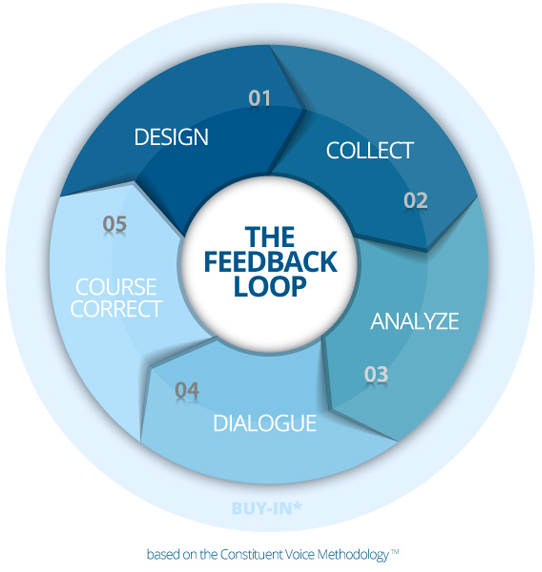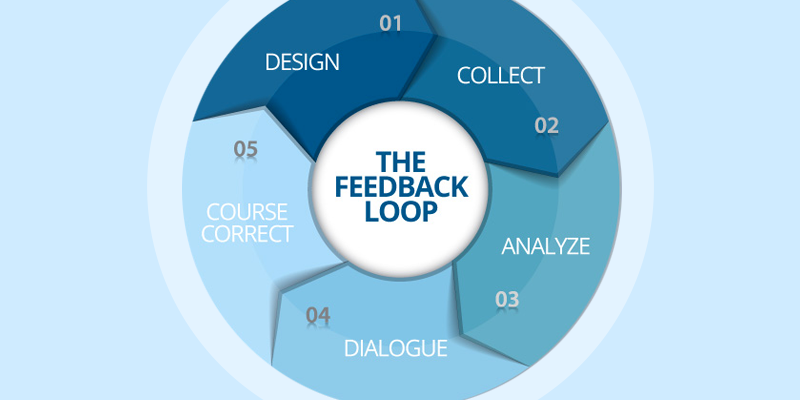
Welcome to Feedback Fundamentals. In this series, we’ll be getting back to the basics and highlighting what it means to “close the loop.” Whether you’re well versed in the jargon or new to the feedback community, this series will introduce you to ideas, frameworks, tools and approaches that we believe are essential for a strong feedback practice. Feedback Fundamentals is all about building a strong foundation and realizing a vision of listening to the people you seek to serve.
In the previous article, we examined why we at Feedback Labs believe that listening to and acting on constituent feedback is the right, smart and feasible thing to do. Now, we’re looking at the first step of a closed feedback loop: buy-in.

Why are you collecting feedback? This is perhaps the most important question to ask yourself before you embark on collecting or analyzing feedback. Answering this question means knowing who you hope to collect feedback from, who you hope will use the feedback you collect, and how you hope they will use it. Buy-in is the process of building support for your feedback initiative among the various stakeholders who will be involved: target respondents, people you are hoping will use the feedback to make decisions and take action, people who might influence those decision makers, and others. The idea is that if people support the process before it begins, they will be more likely to use the feedback once you have collected it.
So who needs to buy-in? That depends on the context you’re in and what change you’re hoping to create with your feedback initiative. Only you can answer that question. Asking “Who are the people or groups whose provision, use, or effect on the outcome of the feedback?” will be mission-critical. Our members find there are three groups in particular who often need to buy-in to feedback initiatives: programmatic decision-makers, front-line staff and the people you seek to serve, your constituents.
First, let’s talk about the people you seek to serve. There are many reasons for involving your constituents in your feedback initiative. Involving the people you seek to serve in the process of designing the mechanism and analyzing and acting on feedback can build meaningful inclusion. Giving your constituents the chance to have their say can guard against paternalism. We also believe that having the people you seek to serve buy-in to your feedback process at the beginning can increase the quality, accuracy and insightfulness of the feedback they choose to share with you. And their buy-in can increase the chances that they themselves will act on the feedback you collect and analyze. To build buy-in with your constituents, we recommend checking out these resources and how-to guides.
Buy-in from your front-line staff can also improve the quality and relevance of the feedback you collect. Ground Truth Solutions focuses on creating buy-in with their front-line staff early-on in the feedback process so that their staff engage in identifying the most critical feedback to collect. The process of building buy-in can also help alleviate staff concerns that feedback will be used against them. Front-line staff are often in the position of responding to feedback from the people you seek to serve, so it’s important that they are supportive of the idea of collecting and acting on feedback.
Finally, it’s important for people who make decisions about your program or policy to be bought into the feedback initiative. They have great power to make decisions about what your organization does and how they do it. They can incorporate feedback into strategic decisions. Building their trust and commitment to the feedback process can make it more likely that they will do so.
We often say that buy-in is step 0 – it has to happen first, but it also has to happen continually. Securing initial buy-in from the start is a necessary,but not sufficient, condition for the success of any feedback loop. But as contexts and conditions change, it’s important to revisit the buy-in step, and ensure that new and continuing stakeholders feel invested in the feedback process.
Next up: read about the second step in a closed feedback loop: design!







